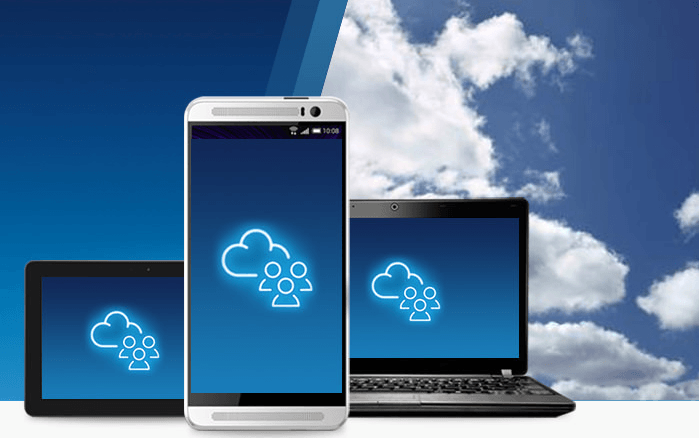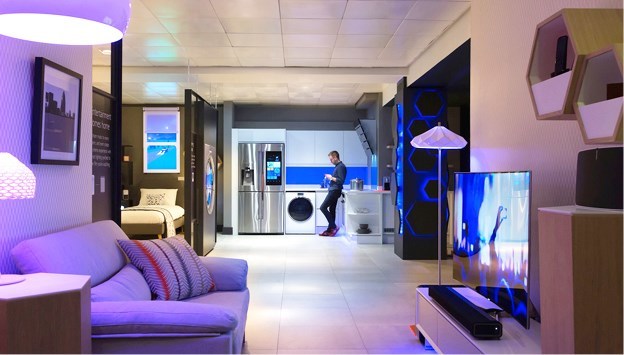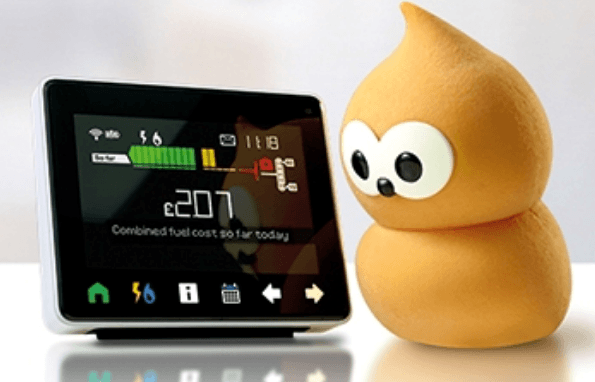The rewards of being the major connectivity provider to the internet-enabled home environment are undoubtedly substantial. It is a space that a number of different industries are seeking to control, with retailers, manufacturers, network operators and utility providers targeting the space most wholesomely.
2016 has seen a number of launches from brands attempting to capture the market. In April, John Lewis revealed a smart home showroom and launched an installation service. September saw the launch of the O2 Home proposition. These new services will challenge the British Gas established Hive products and Samsung’s Smart Things range.
That said, this category is still at a formative stage; much of the discussion at this year’s SmartSummit conference – an event attended by those with a vested interest in the market – concerned the best ways to bring the concept to the mainstream.
‘There are two different customers segments,’ says Katrina Mills, Audio and Connected Home buyer at John Lewis. ‘There’s one section that consider themselves experts and then there is this whole mass of everybody else. This group perhaps care about technology, might like the idea of the smart home, but they don’t really understand it.’
Who takes this technology to the mass market and how they do it remain the two fundamental questions within the smart home debate.
Friends or foes – Utilities and operators
The two most likely candidates to become the smart home provider have long been utilities providers and the mobile networks. British Gas has made the biggest strides in this space; the first Hive Active heating thermostat shipped 200,000 units – far more than any other connected home product.
‘We look at mobile phone companies for inspiration as they’ve been so successful at selling devices and subscriptions,’ says Roberto Hortal – Head of Connected Home at EDF Energy. ‘It seems at the moment that the connected home and consumer IOT markets may be going that way, especially with O2’s new proposition.
‘I think where utilities found an opportunity is that your utilities bill is typically the second highest payment a person pays other than a mortgage or rent, so we can give the connected home value to the customer through continuous bill reduction.
‘This allows a very easy conversation to be had around something customers care very much about – their money. Once the devices are in their home we can then begin to have conversations about comfort, about luxury and all the other parts of the connected home eco-system.’
The role of the retailer
Retailers are another group vying for control of the connected home. It is also viewed as the crucial environment for explaining the connected home concept. The way in which they interact with manufacturers and service providers will be key in defining how the concept is presented to the consumer.
For Allen Alexander, director of strategy and business development at Maplin, operators and utilities providers could provide a business model that could see them take control of the market at the expense of the retailer: ‘I think the telco’s, much like utility companies and cable companies, have got an interesting potential play here. What we see, and what the research shows, is that collectively customers don’t buy because they don’t see the need, or they think it’s expensive or they don’t get the security or it’s too complicated.
‘But with a subscription model – and I know O2 has already stepped in with this – you effectively overcome at least one of those barriers because this isn’t “come in and spend £600 at Maplins or John Lewis” it’s “add £20 to your bill, and you’ll get all this stuff, and we’ll come and put it in”.

‘In terms of how the market’s going to evolve, that could be one way in which it goes it’s not particularly beneficial to us, but it is beneficial to those that already have a relationship with the customer in their home. We watch O2 with interest and others that might step in with that play.
‘So in some respects they have the same hurdles to get over that retailers do in terms of the security of devices and so on. But in others, if you package that up with subscription model and finance – if you include installation – it puts you in an advantageous position.’
For John Lewis, the service aspect of the connected home poses a slight conundrum, it changes the role of the business, says Katrina Mills: ‘From a retailer’s perspective, service is a very challenging element of the smart home proposition, because let’s be frank: most retailers do not offer service. That’s not in our remit, that’s not what we do – we see it in manufacturers and with providers.
‘At John Lewis we pride ourselves on selling the best of the best, so if we were to say to consumers you can buy this service, we need to be absolutely confident that the service is beyond amazing. Should the retailer start entering this arena and actually provide that service as their own proposition? I think that’s something a lot of retailers will be thinking about.’
Real-life scenarios
It’s widely agreed that the concept of the connected home still needs to be communicated in a more understandable way. Like many new technologies, it’s real-life examples that can make the difference in a sale. Gary Lewis, director and owner of smart home installation supplier Cornflake, believes this comes down to how staff are trained: ‘Although the staff on the floor need to have very good technical training and know the ins and outs of a product, when the customers actually come to buy smart home technology or think that they might want it, quite a lot of them don’t care whether it’s a four mega-pixel and or an eight, or what it connects with. What they actually care about are situations and how it can help them.
‘A lot of the technical guys and girls in stores don’t have families and children. The people that come in to store might want to know when their daughter comes home from school and turns the alarm off by getting a notification on their phone. It’s a lot more to do with putting together real-life situations and showing how we can make their lives better from that, not the technical knowhow on the products.’
This sentiment is echoed by Katrina Mills of John Lewis: ‘We spend a lot of time with our suppliers and make sure that all our suppliers come and conduct some training in store. We are very clear; we say to them: “we don’t want you to come and tell us all about the technical spec. Please come to us and give our selling partners the tools so they can talk to their customers about how they can bring these products to life. Tell them how they can explain to a mother coming home at five in the evening how the light will come on so they don’t walk into a dark house. Those are the kind of things a consumer will relate to and those are the kind of things that gives a product real weight. It’s the kind of thing that we work on with all of our staff in retail but also in our call centres.’

Jutta Peinze, the marketing director at smart home specialist manufacturer Sengled, believes that because smart home products have smaller margins, training needs to be carried out collaboratively: ‘I really believe that this training area needs a really strong co-operation from the retailer. If manufacturers pressure down on the price we will not have enough money to buy proper training. We don’t have a big margin, and if you look at consumer electronics it’s only moving further in that direction. It’s not a product with margins of 100% or 200%.
‘At this phase of the smart home category you need to be co-operating here. It’s about saying “maybe the money is not as high, but then on top I calculate you are training people”.’
Bricks-and-mortar benefits
Discussions about customer journey and an omni-channel approach are constant within the retail community. However, when it comes to explaining the connected home concept, the consensus is that retail has a very important role to play, as Alexander Allen of Maplin explained: ‘It should all be an omni-channel seamless experience; the customer journey should work across web, phone, IM and instore.
‘The instore piece is where retailers have an advantage over online if we get the customer service process right. Customers still need to overcome that barrier of “what’s this device and how does it work”. Actually, if you go online there’s just so much out there.
‘If you meet a store colleague who knows what they’re talking about and talks about the problems they can solve for you and can engage with you, that is quite powerful. That’s something we’ve really invested in with the smart home and with smart devices – working with manufacturers to ensure they have that product knowledge. It’s a very particular type of product knowledge and it’s a bit less talking about components in detailed spec, it’s more about why they’re purchasing the product.’
John Lewis has certainly invested in the instore experience. It’s dedicating 1,000 sq ft of its flagship Oxford Street store to the technology. But as Mills explains, this is only one part of the retailer’s strategy: ‘We are very much an omni-channel retailer, were doing a lot of work across the different platforms and the customer journey. The omni-channel experience is important because it needs to be a seamless interaction whether you are online or in a bricks-and-mortar establishment.’
What Mills and John Lewis are striving to achieve is the one thing that will eventually see this category hit the mainstream. A moment when consumers suddenly realise its benefits: ‘When I presented the smart home strategy, I had to come up with something that would summarise what we were trying to achieve, and what we came up with was: To create an environment where customers would have an epiphany moment, seeing how they could use smart home products in their life. This is what has informed all of our strategy.’
The ‘smart home’ brand is hard to sell
‘I’ve been selling smart home technology for nearly 20 years. The biggest problem and hurdle we had as a company was selling the ‘smart home’ brand, the name.’ says Gary Lewis, director and owner of smart home installation firm Cornflake.
Lewis hits upon a critical aspect of the category; how consumers understand it. He explains that in his experience the problem with the smart home branding was that it sounded unnecessary: ‘Other than the early adopters, and there are plenty of those, they’ll look it up online and buy it. The mass market don’t actually want smart home technology. As soon as you say ‘smart home’ they think it’s an unnecessary gadget or gizmo; they think it’s something that will break down and they’re quite happy with the things that they have in their home.
‘It’s all about education. A lot of the customers I deal with have large homes, but they don’t necessarily want smart home technology. They understand that they need to turn off all their lights from one central point or turn off the music, and actually when you show them how these systems work together, they see that it’s not a “smart home“ it’s an “integrated home”: a home that works for you.’
Is connectivity a utility?
As connectivity becomes totally ubiquitous, the question as to whether or not it can be classed in the same category as water, gas and electricity has become more pressing. So far, the most successful connected home products have merged connectivity with a utility requirement such as electricity.
But what is the impact of this integration between utilities and internet service providers. Mobile asked Roberto Hortal, Head of Connected Home at EDF Energy, whether he considered connectivity a utility: ‘I think it’s interesting, they may say they are a tech company rather than a utility because of the high street presence but when you walk past the shopfronts all you learn is that you can get this phone at this price, so I would challenge whether they are actually seen as tech companies by customers, particularly the operators.

‘I think the connected home will help a lot of industries, mobile included, to have a more frequent relationship with their customers. But with energy or telcos, just because we supply the juice to power their sockets or to power their internet, I don’t think it puts us in a front position to claim that constant relationship with a customer, it won’t be limited to a couple of industries.
‘The connected home gives us an opportunity but we need to be able to turn it into a relevant proposition for the customer, and as the space becomes more crowded it’s going to get harder and harder.’
Hortal says that further collaboration between telecoms brands and utility companies could be very advantageous in terms of reducing cost: ’Some of the energy companies are experimenting with selling connectivity, but I’m not sure that’s the way to do it. But between insurance, telcos and utilities there’s an immediate opportunity for us to work together to provide different, but complementary parts of that connected home pie, those synergies to bring the prices of appliances down and make them more affordable.
‘It also avoids the duplication which having a hub for your gas, a hub for your electric, a hub for your insurance and a hub for your home devices would bring. If you can buy one device that does all the services, much like what a mobile phone is today, it will be far more interesting for the customer. The challenge is that it seems to be moving towards exclusive partnerships, and I don’t think that is what the customer wants.’